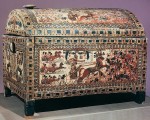 Nobody’s quite sure where they’re from or how they got there, but an almost complete set of leather chariot trappings from around the time of Tutankhamun has been found in a back room of the Cairo Museum. A few chariots have been found in royal tombs — Tutankhamun had six in pieces in his tomb — but leather rots easily and there are only a few fragments extant of ancient Egyptian chariot gear, none of it decorated. This set is so extensive, so elaborate and in such amazing condition that it’s already filling in blanks and correcting misunderstandings of how ancient chariots worked.
Nobody’s quite sure where they’re from or how they got there, but an almost complete set of leather chariot trappings from around the time of Tutankhamun has been found in a back room of the Cairo Museum. A few chariots have been found in royal tombs — Tutankhamun had six in pieces in his tomb — but leather rots easily and there are only a few fragments extant of ancient Egyptian chariot gear, none of it decorated. This set is so extensive, so elaborate and in such amazing condition that it’s already filling in blanks and correcting misunderstandings of how ancient chariots worked.
In 2008, Ancient Egyptian Leatherwork Project expert André Veldmeijer of Cairo’s Netherlands-Flemish Institute saw a grainy picture of some well-preserved chariot trappings in a book from the 1950s. The book said the trappings were in the Cairo Museum so Veldmeijer asked curator Ibrahim El Gawad about them. Gawad had never heard of them.
Entirely by coincidence, a few months later Gawad stumbled on drawers full of leather chariot fittings in a storage room. There were 60 large pieces and many small leather fragments. According to museum records, they were purchased from a Greek antiquities dealer named Georges Tano in 1932, but there is no information about where he got them.
Veldmejier says that El Gawad called him to the museum and showed him “layer upon layer” of leather. “It’s a gorgeous find,” he says. “What was in the picture, that’s not even half of what’s in the museum. It was astonishing.”
The trappings are 90–95% complete, according to Veldmeijer, and include the leather casing that would have covered the wooden chariot, as well as harnesses, gauntlets, and a bow case and quiver. Wear marks and details of the stitching are still visible, and the intricate red, green and white design — the only known example of its type — is still bright after more than three millennia.
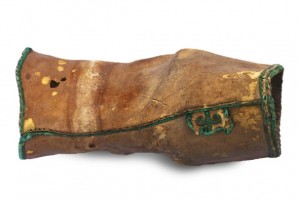
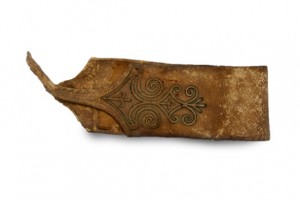
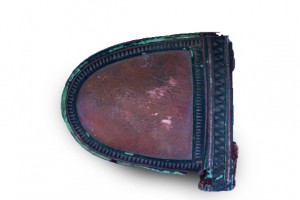
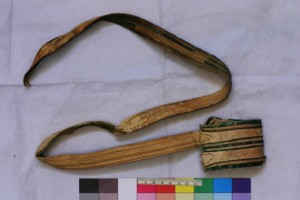
It’s hard to believe they’re ancient, isn’t it? I’m pretty sure I saw that forearm gauntlet on Charleton Heston once. When you think that they languished forgotten in drawers for decades (at least), their condition is even more jaw-dropping.
Not that they don’t need some TLC. Veldmeijer and American University in Cairo Egyptologist Salima Ikram are co-directing the Egyptian Museum Chariot Project to conserve and study the trappings. The pieces that were folded so they’d fit in the drawers need to be painstakingly unfolded and repacked using proper conservatorial materials.
They’ve already found that the trappings all came from a single chariot and were therefore probably discovered together in a single tomb. The stitching and decoration on the leather point to a date between the late 18th Dynasty and the late 19th Dynasty, but further research is needed to narrow down the range.